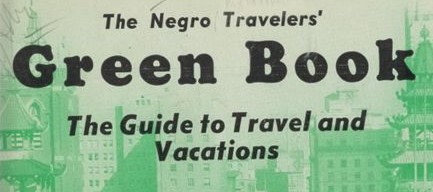Origins of the Green Book
Our digital archive is about "The Negro Motorists’ Green Book" a motorist guide for African-Americans who were traveling throughout the United States. This annual guidebook was based out of New York and published by Victor Hugo Green from 1936 to 1967. It was considered “the bible of black travel”, in particular during Jim Crow laws when African-Americans and non-whites were often targets of overt and legally prescribed forms of discrimination (The Negro Motorist Green-Book). This guide to traveling amid segregation, listed businesses where black visitors could sleep, eat, shop, get a haircut and clothes cleaned in safety and comfort.
Each Green Book has an “Introduction” page that varies throughout the different yearly editions and all editions asked for contributions and site recommendations from their readers. Similar to a magazine, advertisers were also able to purchase ad space promoting their business or products to African-American readers and consumers. The Civil Rights Act of 1964, outlawed the forms of racial discrimination that made the Green Book necessary so the guides were no longer produced. (The Detroit News)

CBS Sunday Morning, Youtube, Published 13 January 2019.
As Kenneth Foote states in his article To Remember and Forget: Archives, Memory, and Culture, "Archives, along with other communicational resources such as oral and ritual tradition, help to transfer information—and thereby sustain memory—from generation to generation." (Foote, 1990). Keeping this principle in mind as it pertains to the Green Book, we wanted to acknowledge the fact that the Green Book was inspired by an earlier Jewish travelers book called The Jewish Vacation Guide. As the Washington Post states in an article about this book inspiring the Green Book, "Antisemitism was widespread in 20th-century America. Membership in the Ku Klux Klan saw a major resurgence in the 1920s, with estimates ranging from 3 million to as many as 8 million members nationwide. While the KKK overwhelmingly targeted Black Americans, Jews also faced frequent discrimination. “No Hebrews or Consumptives Accepted” read many hotel advertisements in the first quarter of the 20th century." Although this website is dedicated to the Green Book, we wanted to give credit from an archival and cultural perspective.
Fewer than one-third of all Green Book sites are said to be standing and occupied.
Most of the more than 80 Detroit hotels, drug stores, salons, restaurants and clubs listed in the Green Book have been demolished, there's at least seven buildings here still standing, according to MSU Map Library research.

